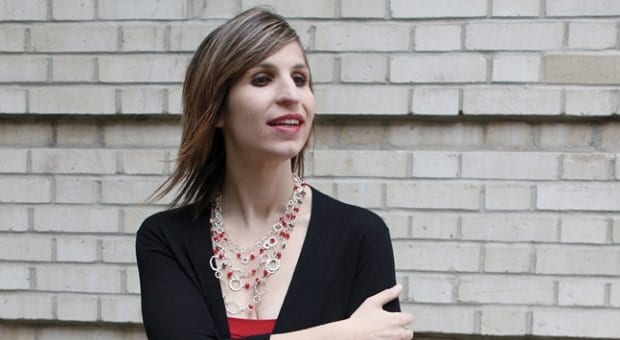Throughout her life, Laurie Rubin has had many labels affixed to her: blind person, lesbian, classically trained opera singer, jewellery designer, author, arts camp founder — and each one of them has come with a set of erroneous (and sometimes comical) expectations.
Like the time she attended a summer music program in the UK and met a fellow performer who began to regale her with tales of the girls he fancied. Then he turned to her with a revelation.
“It was like he considered me for the first time and he said, ‘Oh, yeah, of course, you have the body parts, too. You would be into sex and everything, right?’” Rubin recalls with a chuckle. “Blind people tend to be de-sexualized; it’s assumed that we don’t have a sex life or a love life. And a lot of times, we get treated like children.”
That blind people do in fact have sex, can be gay and execute a wide variety of tasks that sighted people can are just a few of the many myths Rubin aims to dispel in her new memoir, Do you Dream in Color? Insights from a Girl Without Sight.
“People imagine that everything is very hard for me. They’re always shocked that I cook and that I put on my own makeup, that I see colour in my own head, and that I can match clothes or be into style,” she says. “I wanted people to know more about what my life is like.”
Among the misconceptions she regularly faces is many people’s assumption that her partner, Jenny, is her caregiver.
“People aren’t expecting it. It just goes back to the fact that people think I need help in every aspect of my life,” she says. “Most people don’t assume anyone is going to be gay. They don’t even assume that I would be or that a blind person would be.”
In her memoir, Rubin describes the very vivid dreams she had from a young age about women, dreams she simply didn’t have about men. When others ask how she knew she was gay without the benefit of sighted attraction, she turns the question back on them.
“I always say, ‘Do you really think that sight accounts for the sole reason why you’re attracted to someone?’” she says. “When a guy would touch me, I knew that I wasn’t feeling anything from that. But when Jenny would touch my shoulder when I was first getting to know her, it made me crazy. When you’re attracted to someone, it’s not necessarily about what they look like. It’s more about a chemistry or a vibe that happens between you.”
Rubin says that she has experienced far more discrimination as a blind person than she has as a lesbian. She’s lost out on opera roles because she can’t see, has struggled throughout her career to be taken seriously as an artist, and constantly encounters people who second guess what she can do.
In truth, her list of accomplishments is quite lengthy: she has sung in concert halls across the US, including the prestigious Carnegie Hall, has studied with modern opera greats around the world, designs her own jewellery line, and teaches at the performing arts camp she co-founded in Hawaii, where she now lives. She’s also working on a new album, called The Girl I Am, which will be released later this year.
She hopes her story will offer hope and understanding to a variety of audiences – from queer youth struggling with their identity, to parents of blind children, to people who are going blind, to the classical music community that doesn’t yet understand that sight isn’t essential to performance.
“I’m hoping it paves the way for other people with disabilities or other challenges,” she says. “The thing that has helped me through life is being resilient, because now my life is nothing like that negative perspective that others have. Never let anybody else tell you who you are or what you should be.”
Despite her many accomplishments, Rubin says that her life is not extraordinary – and she hopes that anyone who picks up the book will be able to relate to it.
“I want readers to get a universal perspective, for them to read about a very normal life experience,” she says. “I’ve had barriers and I overcame them, but that’s everybody’s story. It’s not just a blind person’s story.”

 Why you can trust Xtra
Why you can trust Xtra


